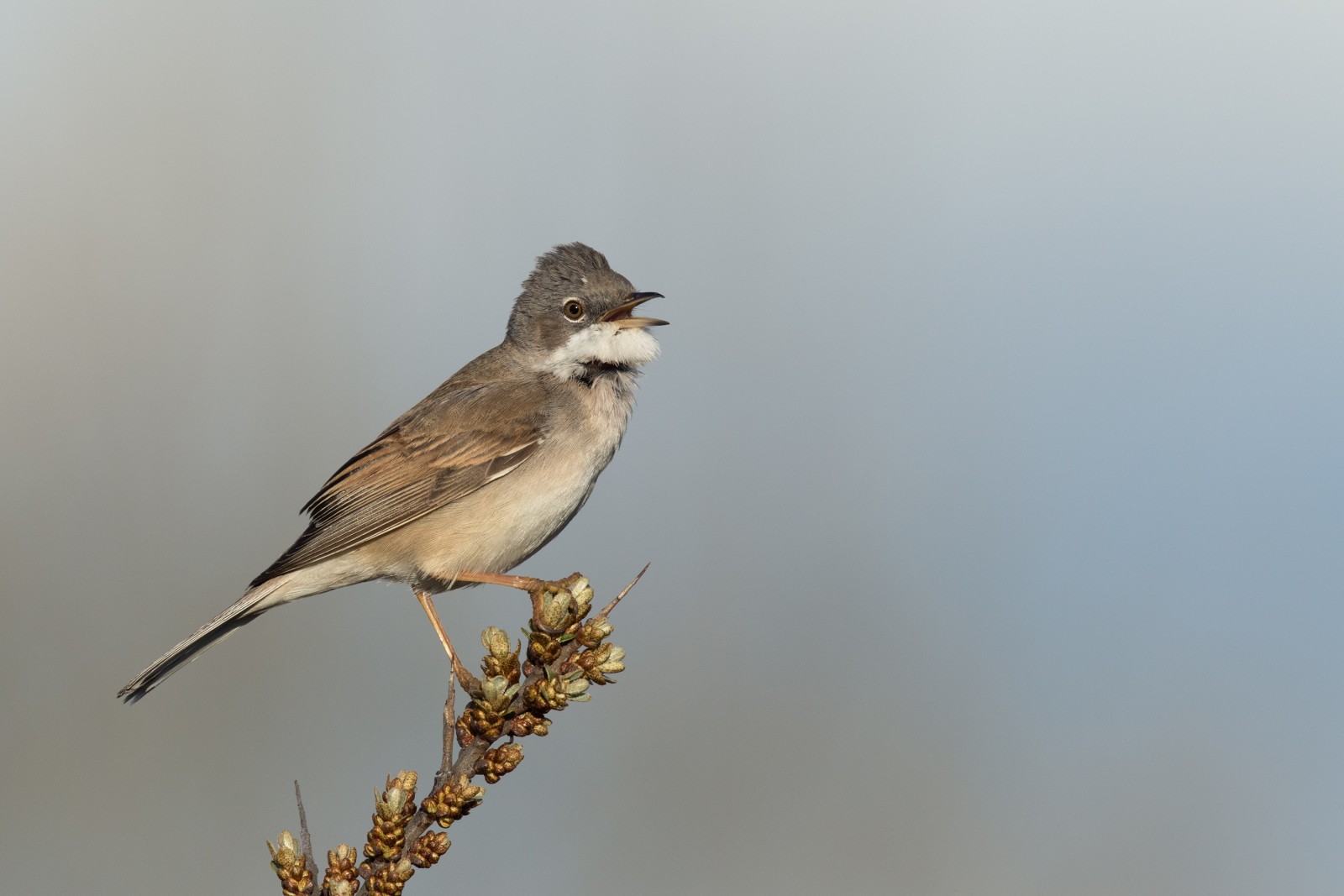Description
The Hedelsche Bovenwaard is a large lake surrounded by floodplain nature with riparian forest, species-rich grasslands and long banks. It was created after sand extraction stopped 10 years ago. Striking are the breakwaters that lie on the east bank and protrude far into the lake. These provide a lot of bank length and variation. They are overgrown with willow thickets and rough vegetation. Beavers, water birds and marsh birds live here. The lake is connected to the Maas via a channel. Due to the tidal effect, which is still somewhat present in this part of the Maas, the water level in the channel varies. There is a bird hide at the beginning of the gully. At low tide you can cross here (shoes off or boots on). You will then arrive in a very beautiful and quiet part of the area. Here is a riparian forest and grasslands rich in herbs. The brambles contain Greater Whitethroat and Cetti's Warbler. Western Yellow Wagtail, Common Sandpiper and Common Redshank are seen along the banks. Common Chiffchaff, Willow Warbler and Common Nightingale in the riparian forest. Common Tern hunt above the lake and many species of geese and ducks on the water. Traces of the beaver can be found mainly on the east side of the lake. The traffic on the busy A2, which runs along the area, is always present, but you quickly forget this when strolling through this species-rich area.
_________________________
Nederlands: De Hedelsche Bovenwaard is een voormalige zandwinplas langs de Maas die door Natuurmonumenten is omgevormd naar natuurgebied. Het is grote waterplas met daar omheen uiterwaardennatuur met ooibos, soortenrijke graslanden en lange oevers. Het is ontstaan nadat de zandwinning 10 jaar geleden gestopt is. Daarna heeft Natuurmonumenten het beheer overgenomen. Opvallend zijn de strekdammen die aan de oostoever liggen en ver de plas in steken. Deze zorgen voor veel oeverlengte en variatie. Ze zijn begroeid met wilgenstruweel en ruigte vegetaties. Hier leven bevers en water- en moerasvogels. De grote plas staat via een geul in verbinding met de Maas. Door de getijde-werking, die in dit deel van de Maas nog enigzins aanwezig is, varieert het waterniveau in de geul. Aan het begin van de geul staat een vogelhut. Er is een drempel aangelegd in de geul van stenen. Bij laag water kun je hier oversteken (schoenen uit of laarzen aan). Je komt dan in een zeer fraai en rustig gedeelte van het gebied. Hier is een ooibos in ontwikkeling en kruidenrijke graslanden. In de braamstruwelen komen grasmus en Cetti's'zanger voor. Langs de oevers worden gele kwikstaart, oeverloper en tureluur gezien. In het ooibos tjiftjaf, fitis en nachtegaal. Boven de plas jagen de visdiefjes en op het water vele soorten ganzen en eenden. Sporen van de bever vind je vooral aan de oostzijde van de plas waar ook een beverburcht is. Het verkeer op de drukke A2, die langs het gebied loopt is altijd aanwezig, maar dit vergeet je snel wanneer struint door dit soortenrijke gebied.
Details
Access
From Hedel, cross the railway and drive along the agricultural road (Gementweg) in the direction of the lake. Park on the verge, at the entrance gate. Another access is via a tunnel under the A2. Park on the dike and go down into the area.
_________________________
Nederlands: Vanaf Hedel, het spoor oversteken en het landbouwweggetje (Gementweg) in richting plas rijden. In de berm parkeren, bij het toegangshek. Een andere toegang is via een tunneltje onder de A2. Parkeren op de dijk en naar beneden kun je het gebied in.
Terrain and Habitat
Scattered trees and bushes , River , Beach , Grassland , ForestConditions
Open landscape , High water possible , WetCircular trail
YesIs a telescope useful?
Can be usefulGood birding season
All year roundBest time to visit
WinterRoute
Unpaved road , Narrow trailDifficulty walking trail
Average walkAccessible by
Car , Bicycle , FootBirdwatching hide / platform
YesExtra info
Please note: at high tide you cannot cross the gully and you cannot make a circular walk around the lake. But you can visit parts of the area.
_________________________
Nederlands: Let op: bij hoogwater kun je de geul niet oversteken en geen rondwandeling rond de plas maken. Wel delen van het gebied bezoeken.

